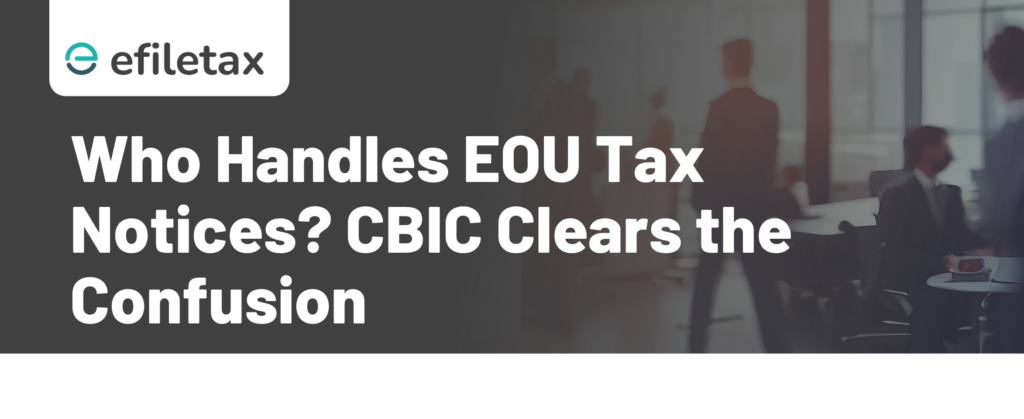
CBIC Clarifies Notice Assignment for EOUs Customs & Excise Demands
The CBIC notice assignment for EOUs has been updated, bringing clarity on how cases involving both customs and central excise duty demands will be handled. This move impacts 100% Export-Oriented Units (EOUs)—entities that enjoy customs and excise duty benefits in return for exporting their entire production.
Let’s break it down simply so that Indian taxpayers, consultants, and businesses understand the legal and compliance impact.
Why This Update Matters for EOUs
CBIC, through Instruction No. 02/2025-GST (also covering legacy excise/customs matters), has issued clear guidelines on assigning adjudication responsibility when both Customs and Central Excise demands arise in the same case against an EOU.
Background
- EOUs are governed under Customs and Central Excise laws for various exemptions and compliances.
- Disputes may arise involving both authorities when duty exemptions are questioned.
- Prior to this clarification, confusion persisted on which authority would handle such cases—Customs or Central Excise.
What the CBIC Clarification Says
Here’s what the CBIC has now clearly laid out:
| Scenario | Who Will Adjudicate |
|---|---|
| Demand involves only Customs duties | Customs Officer |
| Demand involves only Central Excise | Central Excise Officer |
| Demand involves both Customs and Excise | Customs Officer (Adjudication) |
| EOU is under GST, but case relates to pre-GST period | Officer as per above rules, based on duty type |
💡 Note: Even if Central Excise duties are involved, the Customs authority will handle the full adjudication if there’s also a customs component.
Expert Tip: Why It Helps Taxpayers
“This clarification avoids jurisdictional delays and ensures faster disposal of show cause notices. EOUs facing legacy disputes must now directly approach the customs authority if the matter involves both duty types.”
— CA K. Rajan, EOU Compliance Specialist
What EOUs Should Do Now
Here’s what EOUs must keep in mind post this clarification:
- Check pending SCNs – See if they involve both customs and excise.
- Approach the correct authority – If both duties are involved, go to Customs, not Excise.
- Update legal teams – Align responses based on revised authority allocation.
- Track adjudication timelines – Expect faster closure due to clear responsibility.
Legal Reference
- CBIC Instruction No. 02/2025-GST
- Sections from Customs Act, 1962 and Central Excise Act, 1944
- Relevant to cases under FTP benefits, duty forgone, and export compliance issues.
Summary
CBIC assigns adjudication of notices involving both customs and excise duty demands against EOUs to Customs authorities. This clears jurisdictional confusion and speeds up legacy case closures.
FAQ Section
Q1. Who will adjudicate if an EOU has only excise duty issues?
A: The Central Excise officer will handle the case.
Q2. What if a case involves both customs and excise duties?
A: The Customs Officer will adjudicate the entire matter.
Q3. Does this apply to GST-era cases?
A: No. This is for legacy disputes before GST implementation (pre-1 July 2017).
Q4. Where can I check the official CBIC instruction?
A: Visit the CBIC official site.
Ready to Resolve Old EOU Tax Disputes?
If you’re an EOU facing customs or excise notices, let Efiletax help you file responses and manage legacy cases efficiently.